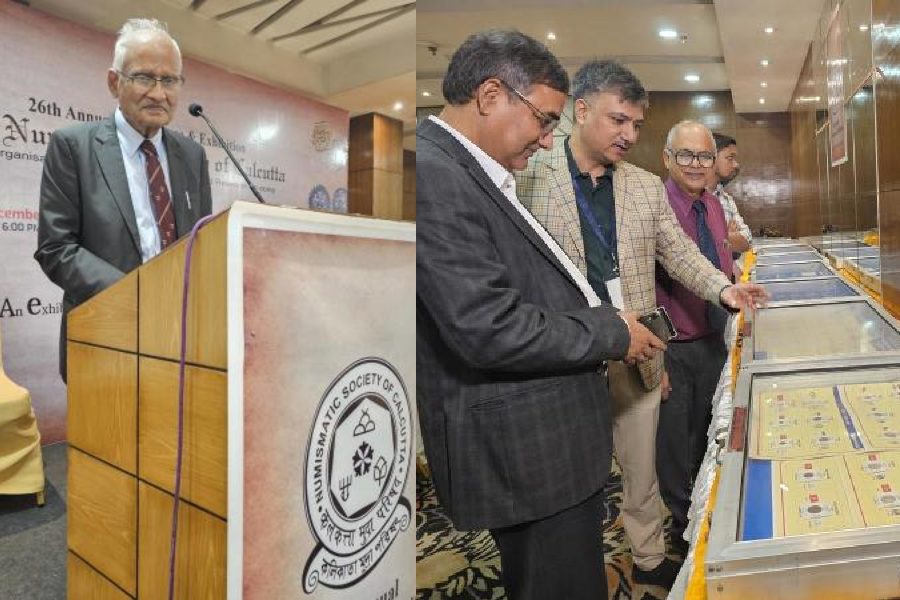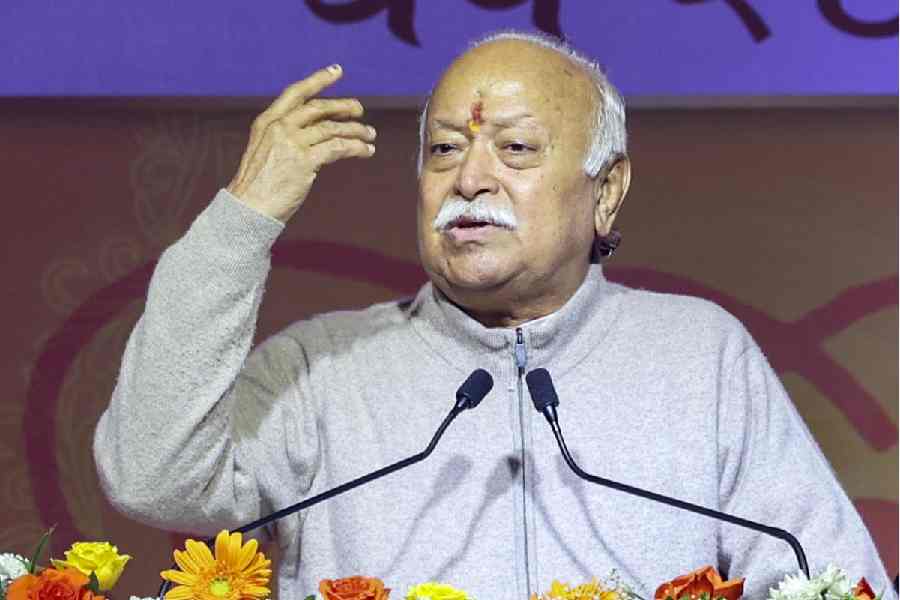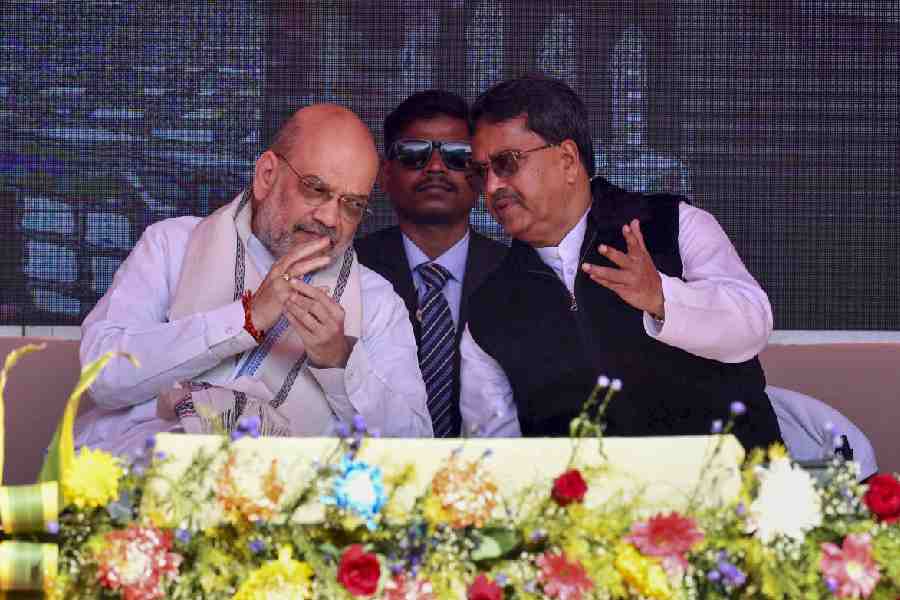When the Tirupati temple administration, the Tirupati Tirumalai Devasthanams (TTD), decided to sort the ancient coins from its collection because of lack of storage space in the treasury in 2011, one of the numismatic experts who were consulted was D. Raja Reddy.
The 86-year-old chairman of The Numismatic Society of India is in town to attend Mudra Utsav, an exhibition and conference organised by the Numismatic Society of Calcutta, which will conclude on Sunday.
Speaking to The Telegraph, Reddy, a neurosurgeon, recalled: “The coins offered over centuries weighed 48 tonnes. They wanted to know what to keep and what to dispose of."
The sorting took months. There were coins from 63 countries in the hundi, or the box of offerings. Of them, other than India, the most were from Malaysia and the US. “There were about three lakh American coins but they were all modern, dated 1943 and later. The Malaysian coins numbered about three or four lakh,” he said.
Such contemporary foreign coins accounted for 18 tonnes. The scholars urged the TTD to preserve the rest.
Special attention was given to 1,213 gold coins. They were from not only Indian rulers but European rulers too. There were medals of France and Germany belonging to the 19th and 20th centuries as well as gold coins of Iran and Turkey. The Islamic coins were from Indian dynasties of various periods. The East India Company too had issued gold coins featuring the portrait of Lord Venkateswara either alone or with his two consorts.
The findings were significant enough to merit two books that Reddy co-edited with A.V. Narasinha Murthy — Gold Coins in the Srivari Hundi of Lord Venkateswara and Silver, Copper & Other Metal Coins in the Srivari Hundi of Lord Sri Venkateswara.
Coins, Reddy pointed out, help piece together missing links of Indian history. Tirumalai was ruled from ancient times by the Satavahanas (30BC- 230 AD), the Pallavas (260-900AD) and the Cholas (900-1250 AD) among others. “But we did not know much about the first Satavahana king, Simuka, leave alone who ruled before him. Hundreds of kings have left no trace except their coins,” Reddy said, naming rulers like Samagopa, Gobada and Narana who ruled in the Telengana area after the fall of Mauryan Empire and before the Satavahanas who have been traced through their coins.
The biggest benefit of scouring the temple offerings, Reddy said, was helping date the temple's origin. “There are 900-odd inscriptions around the temple. The oldest, in ancient Tamil, referred to a Pallava king, dated circa 630 AD, mentioning that he was renovating the temple. But the earliest coins found in the hundi belonged to pre-Christian times, the Satavahana and the Chola eras. The discovery of coins from the first century BC helps predate the temple,” he said.
At Mudra Utsav, other than sale of collectibles, it is the exhibition that is drawing visitors. “Usually our exhibitions focus on ancient coins. This time to encourage young collectors, we have chosen the theme as machine-struck coins, which came in circulation from 1835 and are still in vogue,” said Ravi Shankar Sharma, the secretary of the society.Tapan Seal is showing coins of princely states like Kutch, Travancore and Junagadh. Debkumal Pal has brought currency notes of odd denominations and the world’s largest note, issued in 2018 in Malaysia. Souvik Mojumder’s theme is coins and tokens of the British colonies. They are among the nine exhibitors.











